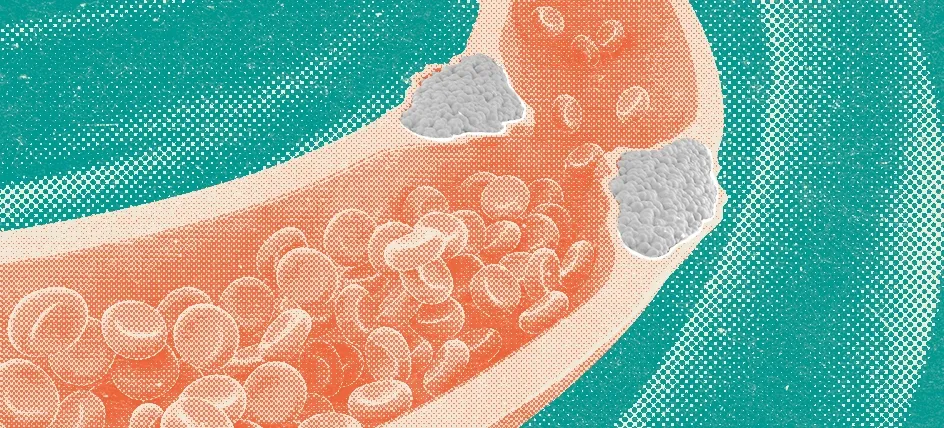Back to Health Resources
Understanding Cholesterol

Cholesterol is a waxy, fat-like substance that our bodies need to survive and grow. It is a central building block for the cells in our body and it fulfills other important roles in the body. Cholesterol comes from two sources: 1) our bodies make it, and 2) we get it from the foods we eat.
You’ve probably heard of LDL cholesterol, HDL cholesterol, and Triglycerides as types of lipids that your doctor checks when you get blood work completed. More recently, doctors are exploring new particles in the human body like Lp(a) and Apo B to get a more complete picture of your cardiometabolic health. However, let’s start with the basics before we explore these new types of cholesterol.
The Basics of Cholesterol
LDL cholesterol
Low-density lipoprotein, or LDL, sometimes referred to as “bad” cholesterol, can lead to build-up in our arteries making us more likely to have a heart attack or a stroke.
HDL Cholesterol
High-density lipoprotein, or HDL, is thought of as the “good” cholesterol because it carries LDL cholesterol away from the arteries to the liver where the LDL is processed and removed from the body.
Total cholesterol
Both LDL and HDL combined into one score.
Triglycerides
These are not cholesterol, but another type of lipid (or fat) in the blood. They store extra energy from the food we eat. Doctors believe that high levels of triglycerides are linked with increased cardiometabolic risk.
New Frontiers in Cholesterol
Apo B
Apolipoprotein B, or Apo B, carries bad cholesterol (LDL and VLDL) to where it needs to go in the body. When scientists find Apo B in the blood, it tells them that there's bad cholesterol present.
What's interesting is that each Apo B molecule is responsible for transporting exactly one piece of bad cholesterol. This makes it easy for scientists to count and measure how much bad cholesterol is in the blood accurately. In comparison, regular cholesterol tests estimate bad cholesterol by subtracting good cholesterol (HDL) from the total cholesterol, a measure which may not be very accurate for some people.
Because Apo B gives a more direct and reliable measure of the harmful cholesterol in the blood, doctors think that Apo B could be a better way to predict heart health.
Lp(a)
Lipoprotein(a), or Lp(a), is a type of cholesterol that is similar to the “bad” LDL cholesterol but even stickier. It consists of an LDL cholesterol particle with an extra protein attached to it called apolipoprotein(a).

LDL + the sticky apolipoprotein(a) protein = Lp(a)
Elevated levels of Lp(a) in your blood can contribute to blocked arteries, thus reducing blood flow to your heart, brain, and other vital organs. It can also increase clotting and can cause inflammation in blood vessels.
Facts about Lp(a):
- The level of Lp(a) you have in your body is mainly genetic, meaning it is inherited from your parents.
- 1 in 5 of us has a high level of Lp(a).
- Lp(a) levels in the Black population, on average, are more than 2x higher than in the White and Hispanic populations.
- High Lp(a) increases risk of heart attack at an early age by 3x. 1
- Most people who have high Lp(a) are unaware.
- Conventional cholesterol tests don’t measure Lp(a), and most doctors do not routinely check Lp(a) when ordering blood tests.
- There is no drug currently available to lower Lp(a). Statins do not lower levels.
- Diet, exercise, and other lifestyle changes do not typically impact Lp(a) levels.
- Doctors are testing new medicines for lowering Lp(a) in an effort to decrease heart attacks and strokes.
What Can You Do About Lp(a)?
Lp(a) levels are just one part of your overall risk for cardiovascular disease. It’s important to talk to your doctor about your overall cardiovascular health including other risk factors to get a full understanding of your health. Knowing your level can help you better manage your overall risk.
Here are some steps you can take:
Get Tested
Ask your doctor to measure your Lp(a). This is especially important if you have cardiovascular disease including poor circulation in your legs, previous heart attack, stroke, or blocked arteries. It is also important to know your Lp(a) if you have a family member who has had a heart attack or stroke, or if you have other risk factors for cardiovascular disease. An Lp(a) test is included in our no-cost heart and kidney screening.
Manage Other Risk Factors
Doctors and scientists are working together to find new medicines that will help lower Lp(a) levels. Seeing if you qualify for one of these studies could be a good way for you to have access to early investigational treatments while helping to make these new treatments available to others in the future. More on Lp(a).
Get Involved in Studies for Investigational Lp(a) Treatments
Lifestyle choices like eating a heart-healthy diet, getting regular exercise, and quitting smoking (if you smoke) are within your control. Your doctor can also advise you on medication to manage your blood sugar, cholesterol, and blood pressure if needed.
Talk to Your Family & Friends
Lp(a) is primarily inherited, meaning if you have high Lp(a) your relatives, including your parents, siblings, and children, may also have the genetic risk factor. About 60 million Americans are estimated to have high Lp(a), meaning that one in five of us have it. Discuss Lp(a) with family and friends and encourage them to get screened.
DISCLAIMER
The information provided on Care Access is intended for informational purposes only and should not be considered as a substitute for professional medical advice, diagnosis, or treatment. Always seek the advice of your physician or other qualified healthcare provider with any questions you may have regarding a medical condition. Our products and content are not intended to diagnose, treat, cure, or prevent any disease.
Explore More Health Resources

STORIES from the Heart

